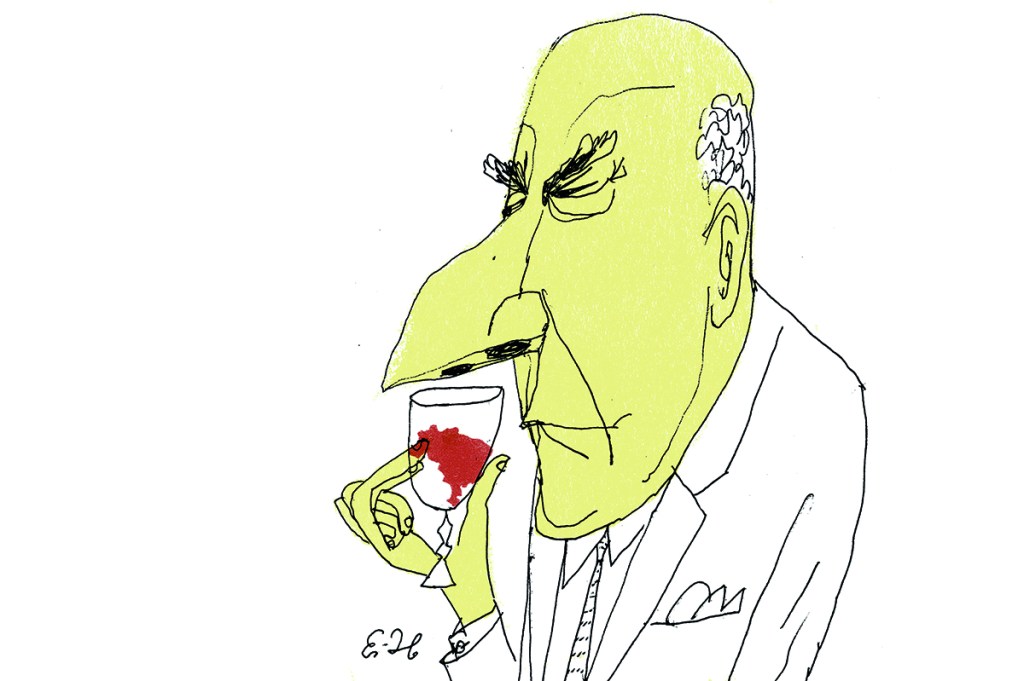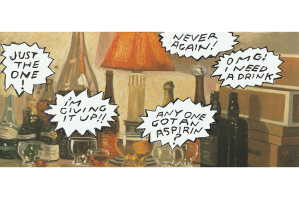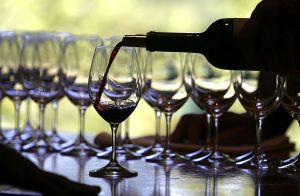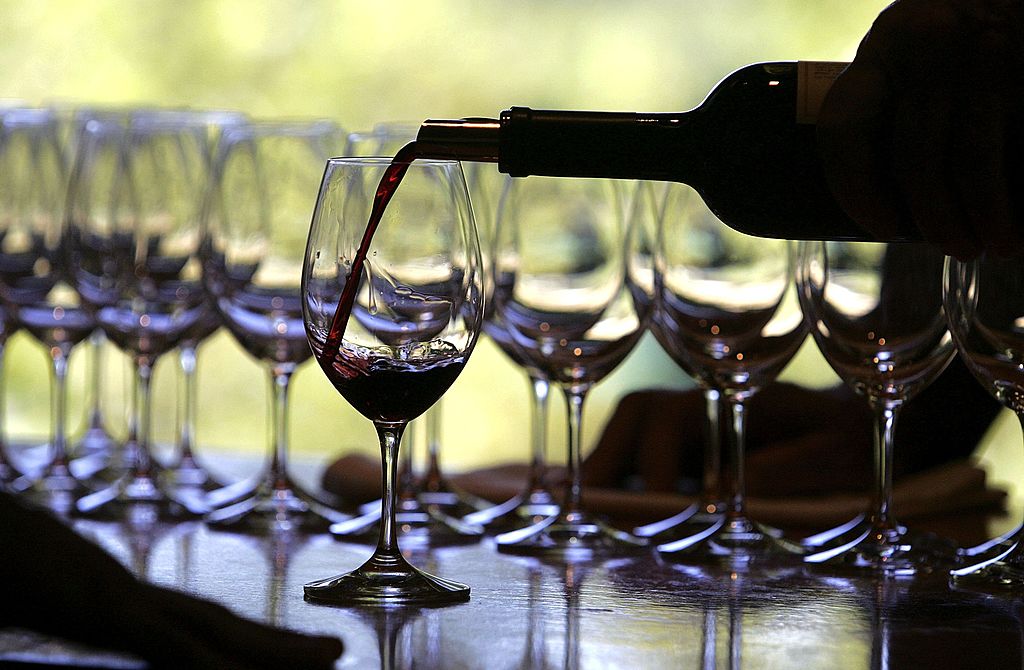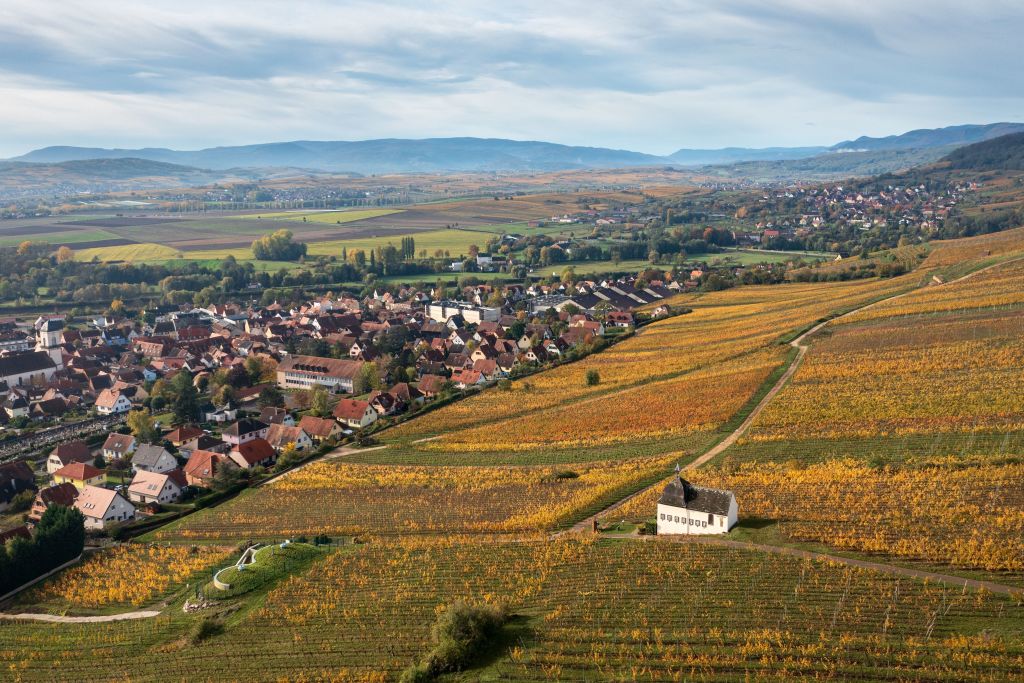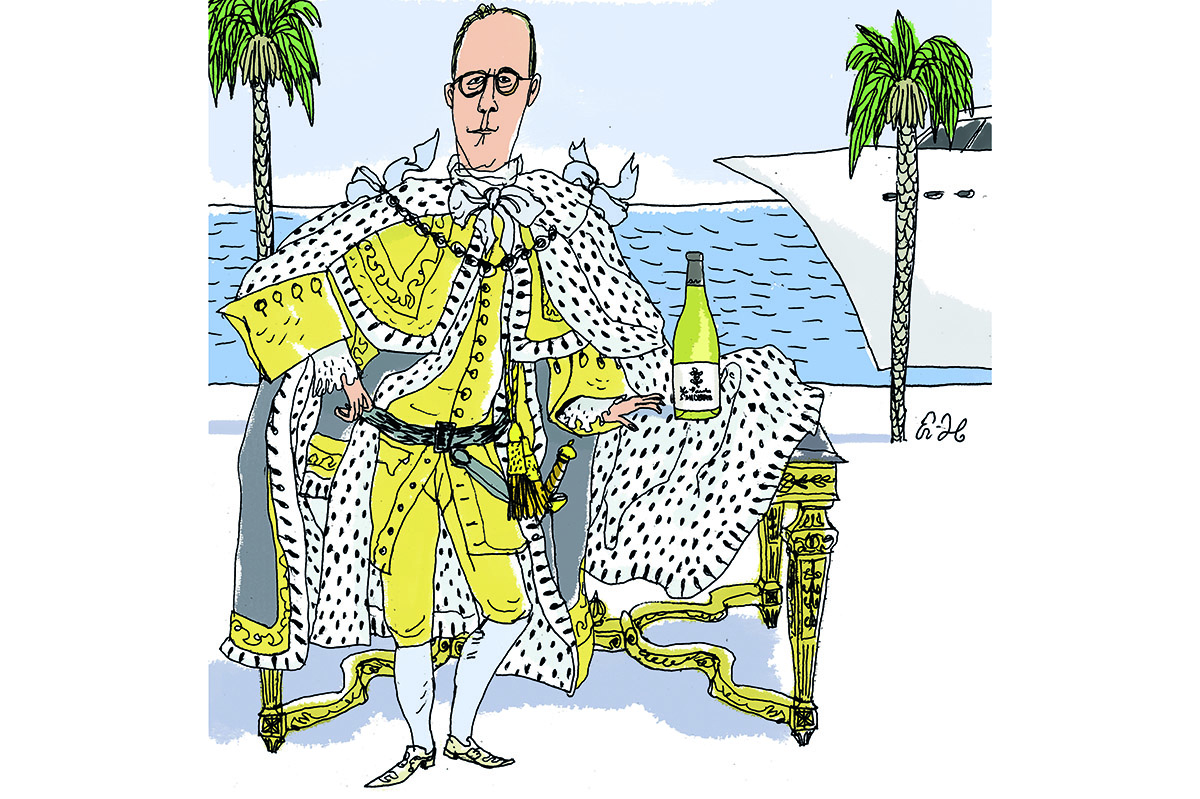Some people think that wine is a serious business. I am often tempted to think that myself, but then I remember an amusing cartoon by James Thurber called “The Wine Snobs.” It shows four people sitting around the dinner table, each holding up a glass of wine. There is an air of resigned dubiousness emanating from the table as whole. But the W.S. himself sports a big smile and says enthusiastically “It’s a naive domestic Burgundy without any breeding, but I think you’ll be amused by its presumption.”
Been there, done that.
We’ve tasted some pretty fancy wines together in this column, and I hope there will be plenty more to come. At the end of the day, though, wine for most of us is chiefly about pleasure and camaraderie, not connoisseurship. An exquisite Montrachet or La Tâche is nice as a treat, but day-in-and-day-out what one wants are wines that are friendly, biddable and (to speak frankly) cheap.
There are fewer and fewer candidates from the premier American wine-growing regions of California and Oregon, and the same applies to wines from France, Italy and Australia. Bargains, as a rule, must be sought further afield. I recently had the opportunity to taste a few Brazilian wines over luncheon with a few friends in Washington, DC, and I am pleased to say that the outing was a success.
Most wine drinkers will be at least causally acquainted with some wines from Chile and Argentina. I am partial especially to some Argentinian Malbecs and have also spent some quality time with a few Chilean Cabs. I had not, until that luncheon Washington, had any wine from South America’s largest country.
Winemaking has a long history in Brazil. The earliest trials were in the 1500s when the Portuguese planted wines around Rio de Janeiro. The hot and humid climate took its toll. There followed other experiments, but it was not until the late nineteenth century that Italian immigrants made success in the more temperate south. Indeed, it is only in the last few decades that the Brazilian wine industry really took off. Today it is the third largest producer in South America, after Chile and Argentina, with some 1,100 wineries concentrated mostly in the south. Although it is not always easy to find Brazilian wine in America, that is likely to change soon. Brazil’s international business is expanding, and their typically light, fruity and approachable wines are likely to find a place in the American market. Most are also low in alcohol, which makes them especially attractive in the summer months when the great outdoors beckon.
Nearly 80 percent of Brazilian wine is sparkling, usually a combination of Chardonnay and Pinot Noir. Moët & Chandon, the famous champagne house, recognized the potential of Brazilian sparklers and is heavily invested in the business there. The largest domestic concern, the Miolo Wine Group, also makes several fetching sparklers. As an aperitif, we had the Brut Cuvée Tradition from Serra Gaúcha: a fresh, clean, lightly aromatic wine, 50-50 Chard and Pinot Noir, with enticing hints of chalk. It can be yours (if you can find it) for about $25. It was a warm and sunny day in Washington, and I found myself, as the conversation brightened, thinking that the wine was like Falstaff’s self-description: not only witty in himself, but also the cause of wit in others.
For reds, Brazil makes some Cabernet blends and lots of Merlot. With our roasted duck breast we had a pleasant Pinot Noir, also from Miolo, which is sourced from house-owned vineyards in the Campanha Meridional. In color, the wine is a light, lambent ruby, well-structured and modestly fruit-forward. It served the duck unobtrusively but, judging from the number of times the waiter appeared at my elbow to freshen my glass, it served it faithfully as well.
Again, you won’t — not yet — find this wine in every wine shop, but when you do, you’ll discover that it can be yours for under $15.
One Brazilian potation that can be found everywhere is the rum-like digestif Cachaça. We sampled the delightful Princesa Isabel Cachaça de Alambique, a rich, honey-hued, com- plex drink that seemed softer than its robust cognac-like proof. You’ll be glad to end your meal with a thimble or two, grateful that an entire bottle will set you back less than $30.
This article was originally published in The Spectator’s May 2022 World edition.



